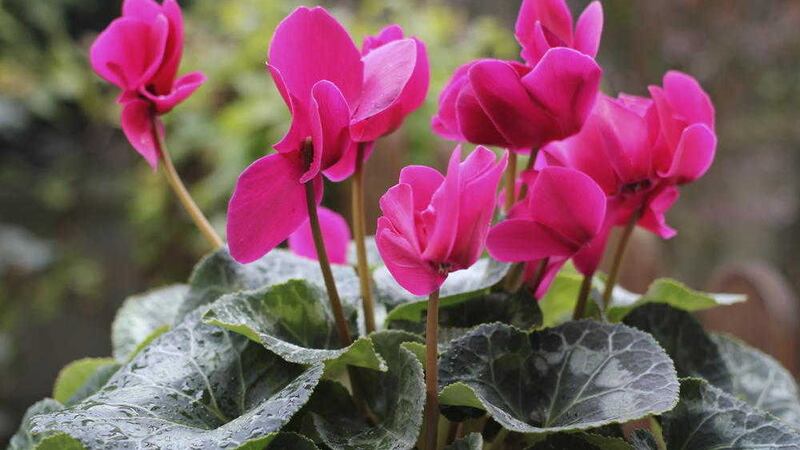FIFTY years into my life I’ve firmly concluded that I don’t much like December.
But before a chorus of tipsy readers shouts ‘Ba humbug’, let me stress that it’s not about Christmas – at least, not entirely.
I like Christmas and I like the ‘Christmas spirit’, it’s just that I like it at Christmas – not two, three and sometimes four weeks beforehand.
December is my least favourite month as a gardener too.
It’s hard to find either the time or inclination to venture outdoors and on the rare occasions the weather is conducive with pottering, enjoyment is curtailed by fading light.
Perhaps it’s something of a blessing that bar skeletal deciduous trees and shrubs, the ornamental grasses and the evergreens, there’s not a lot to see over the coming weeks.
Inside, however, it is a different story with Amaryllis, azalea and poinsettias brightening up window sills and table tops around the house.
One of my favourite houseplants at this time of year is the diminutive cyclamen – which bears flowers like those which in a matter of weeks will be gracing the farther flung corners of the garden, where hardier specimens of the same plant grow.
Most of the indoor favourites are small-flowered derivates of Cyclamen persicum – also known as the ‘florist’s forms’ – which come in white, crimson or magenta.
Distinctive and attractive as the flowers are, cyclamen is also treasured for its foliage, which is often variegated or marbled. Indoors, Cyclamen persicum will flower from autumn to early spring.
The plants should be positioned in a bright spot but out of direct sunlight.
Watering is recommended from below by adding water to the saucer that the pot sits in.
Like many plants given as gifts at this time year, there’s a tendency for cyclamen to be discarded after flowering.
However, they will bloom again if moved to a cooler spot after flowering, where they can quietly sit out dormancy over the summer.
They can be placed outside after the final spring frost but be sure to bring them inside again before temperatures drop in the autumn.
By the end of January the hardier Cyclamen coum will be appearing outdoors in the garden, where given the seasonal context, it's are a match for any drift of daffodils or the brightest dahlia August has to offer.
This low-growing tuberous perennial would get overlooked in a busy summer border but when there’s little else flowering, the hardy cyclamen species and cultivars come into their own.
They make great ground cover and are ideal for naturalising under trees, on banks or in a shady border where ideally they should be planted alongside other early-flowering woodland plants – snowdrops, winter aconites and primroses.
Cyclamen coum – or eastern cyclamen – comes with the Royal Horticultural Society AGM stamp of approval.
The deep pink flowers are no bigger than a 2p piece and have a purple blotch at the base of each lobe.
Whether it's the foliage providing ground cover or flowers brightening up a dark recess, cyclamen combinations will deliver for most of the year.
The freely self-seeding Cyclamen hederifolium, another AGM holder, has marbled, ivy-like leaves and is good for winter and spring ground cover before bearing large pink flowers in autumn.
Cyclamen purpurascens (AGM) flowers from mid-late summer with pink, fragrant flowers borne on dark green and silvery mottled leaves.
Cyclamen repandum – AKA wavy cyclamen – has heart-shaped leaves speckled with grey and rose-red flowers from mid-spring.








